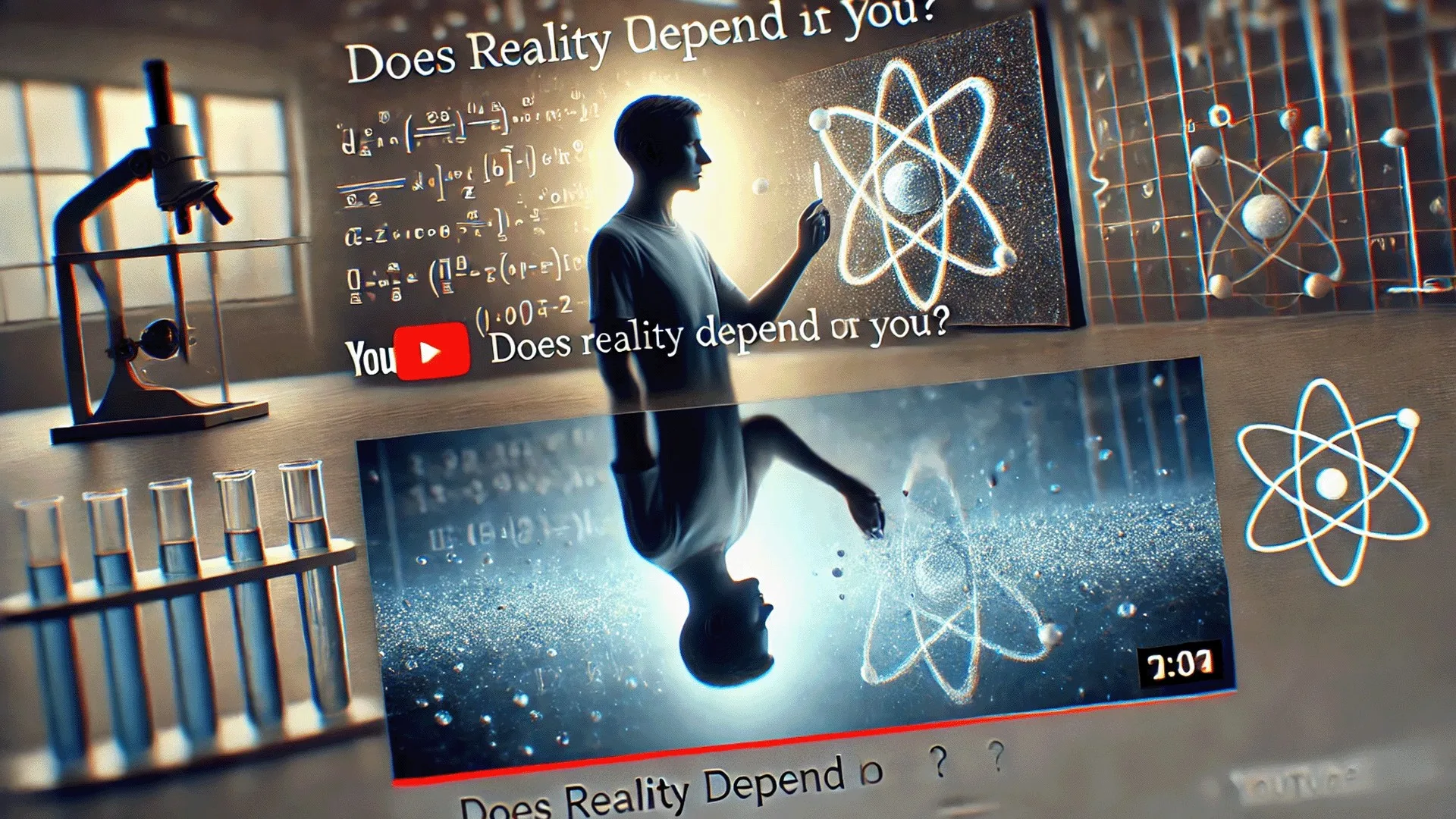The Magical Box and Quantum Reality: A Journey into the Unknown Imagine you have a magical box that can create anything you wish for—an a
The Magical Box and Quantum Reality: A Journey into the Unknown
Imagine you have a magical box that can create anything you wish for—an apple, a pencil, even a unicorn. The twist? This box doesn’t decide what it creates until you open it and look inside. Until that moment, the possibilities swirl together, existing all at once. It’s only when you peer inside that the box makes its choice, collapsing those myriad potentials into one tangible item.
If this sounds mind-bending, it’s because it’s eerily similar to the fundamental principles of quantum mechanics. Before we look inside, before we measure or observe, a particle doesn’t exist as one single state but as a superposition of all possible states. This strange and paradoxical behavior is known as wave function collapse, and it forms the crux of the Copenhagen interpretation of quantum mechanics. But how did we come to understand such a bizarre version of reality?
The Dawn of Quantum Thinking
Long before quantum mechanics transformed our understanding of the universe, ancient civilizations speculated on the nature of matter. The ancient Greeks pondered whether air, fire, water, or earth formed the bedrock of existence. Fast-forward to the early 20th century, and the discovery of atoms—believed to be indivisible—shifted that paradigm. Yet, this was only the beginning.
Max Planck, Albert Einstein, Niels Bohr, and other pioneering physicists unraveled the atom to reveal a world brimming with strange subatomic particles. Not only did they discover that atoms could be split, but they also uncovered behaviors defying classical physics.
Particles, Waves, and the Great Paradox
In the world of quantum mechanics, particles like electrons, quarks, and neutrinos behave in ways that defy intuition. Modern physics posits that these particles are not simply hard, tiny objects darting around but are more accurately described as excitations in underlying fields, as detailed by quantum field theory. In this view, particles are the tip of an iceberg, the visible manifestations of deeper, more mysterious energy fields.
Consider this: an electron might appear as a particle under certain conditions but behave like a wave under others. This is known as wave-particle duality, one of quantum mechanics’ most baffling features. Such phenomena invite questions that even seasoned physicists struggle to answer. How can something be both a particle and a wave? How does observing an electron force it to “choose” one state over another?
The Schrödinger’s Cat Paradox: A Thought Experiment
Physicist Erwin Schrödinger aimed to illustrate the counterintuitive nature of quantum superposition with his famous thought experiment involving a cat, a vial of poison, and a decaying radioactive atom. In the sealed box, the cat exists in a superposition—both dead and alive—until someone opens it and observes the outcome. This scenario, though purely theoretical, underscores the strange reality that quantum states do not “decide” until observed.
This phenomenon led to deeper investigations into what it means to “observe” a quantum state. Does it require a human mind, or is a mechanical detector enough to collapse the wave function?
The Copenhagen Interpretation: Measuring Reality
The Copenhagen interpretation, widely accepted in quantum physics, posits that the act of measurement is what causes the wave function to collapse, transitioning a quantum system from a superposition of states to one defined state. Before this collapse, we can only talk in terms of probabilities, not certainties.
However, this interpretation raises more questions than it answers. What qualifies as an “observer”? Why does observation influence the system at all? Is consciousness involved, or is it purely a physical interaction?
Beyond Atoms: The Fabric of the Universe
If you were to break down the matter around you to its most fundamental components, you would reach the subatomic particles described by the Standard Model of particle physics. Yet, even this model reveals only part of the picture. Physicists now know that subatomic particles interact within a vast framework of fields, from the electromagnetic field to the Higgs field, which endows particles with mass.
Particles like photons, the carriers of light, are excitations in the electromagnetic field. Intriguingly, these fields permeate the universe, implying a background hum of potential even in the vacuum of space, where so-called virtual particles blink in and out of existence.
Heisenberg’s Uncertainty Principle: Embracing the Unknown
The quantum world isn’t just puzzling—it’s inherently uncertain. Werner Heisenberg’s uncertainty principle highlights that you cannot simultaneously know a particle’s exact position and momentum. The more precisely you measure one, the less precisely you can know the other. This limitation isn’t due to flaws in measurement tools but a fundamental aspect of nature itself.
This uncertainty challenges the classical notion of a predictable, deterministic universe. In quantum mechanics, outcomes are dictated not by fixed rules but by probability distributions described by a particle’s wave function.
The Mystery of Entanglement
Perhaps the most perplexing quantum phenomenon is entanglement, where two or more particles become linked in such a way that the state of one immediately influences the state of the other, regardless of the distance between them. Einstein famously called this “spooky action at a distance,” a clear indication of his discomfort with the non-local nature of quantum mechanics. Yet, experiments have repeatedly confirmed that entangled particles behave in a way that defies classical explanations, suggesting that information can be shared instantaneously across vast distances.
The Many Interpretations of Quantum Mechanics
Physicists have debated the meaning of quantum mechanics for decades, and various interpretations have emerged:
- Many-Worlds Interpretation: Every possible outcome of a quantum event actually occurs, with the universe splitting into a multitude of parallel realities. If you open the magical box, one universe sees an apple while another witnesses a unicorn.
- Pilot-Wave Theory: Suggests that particles have defined positions and are guided by an unseen “pilot wave,” preserving determinism but introducing non-locality.
- Objective Collapse Theories: These propose that wave functions collapse spontaneously after reaching a certain threshold, independent of observation.
Despite these theories, no experimental evidence distinguishes one interpretation from another definitively. The debate remains open, and interpretations like Bohmian mechanics and Relational Quantum Mechanics continue to challenge conventional thinking.
Quantum Mechanics and Consciousness: A Murky Intersection
Some theories venture into the realm of consciousness, suggesting that the act of observation might involve more than just physical interactions. Integrated Information Theory and quantum theories of consciousness imply that awareness itself could play a role in collapsing the wave function. Yet, mainstream physics remains skeptical, citing the lack of empirical evidence for such claims.
The Pursuit of an Ultimate Understanding
Quantum mechanics stands as a testament to human ingenuity, a mathematical framework capable of predicting phenomena with unparalleled precision. It has given rise to technologies like semiconductors, lasers, and quantum computers, reshaping our world.
Yet, the philosophical implications remain as murky as ever. Why does measurement influence reality? Is there an observer-independent universe, or is everything we understand a product of our measurements? These questions touch on the very nature of existence and how we perceive it.
The Magic Box Revisited: A Quantum Metaphor
The magical box that conjures any object serves as a powerful metaphor for quantum mechanics. Before we observe it, the contents of the box—much like a particle’s state—exist in a liminal space where possibilities overlap. It’s only when we look, when we engage with the system, that reality crystallizes into a singular outcome.
This paradox challenges our most fundamental beliefs about reality and observation. The universe, as revealed by quantum physics, may not conform to our intuitive sense of how things should work. Instead, it shows us that reality is fluid, contingent, and far stranger than we could have imagined.
Conclusion: Embracing the Enigma
Quantum mechanics has shattered the idea of an objective, observer-independent reality. It invites us to reconsider the very framework of existence, urging us to accept a world where certainty is replaced by probability and where the act of observation is as powerful as creation itself. Until experiments teach us more, we are left with this profound mystery: the universe, with all its magic and wonder, may be as much a product of our measurements as it is an independent reality.


